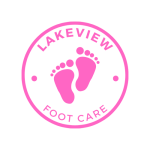[ad_1]
Strategies: The present examine thought-about full-text articles performed in Ethiopia, written in English, and revealed from 2017 to 2020. Ten digital databases: PubMed/MEDLINE, Internet of Science, SCOPUS, Google Scholar, MedNar, Embase, CINAHL, Cochrane Library, African Index Medicus, and African Journals On-line database had been used to look the articles utilizing a mix of Boolean logic operators (AND, OR, and NOT), Medical Topic Headings, and essential key phrases. The standard evaluation of the articles was carried out utilizing the Joanna Briggs Institute Crucial Appraisal instruments to find out the relevance of the article to the present examine.
Outcomes: Of the 1377 articles recognized from the included digital databases, 12 research had been included within the systematic assessment and meta-analysis. The examine discovered that the pooled prevalence of occupational-related elbow ache, wrist/hand ache, knee/leg ache, foot/ankle ache, and hip/thigh ache within the earlier one yr was 19.7% (95% CI: 12.3, 30.1), 24.2% (95% CI: 17.4, 32.7), 25.0% (95% CI: 18.5, 32.8), 20.2% (95% CI: 12.8, 30.4), and 15.5% (95% CI: 9.9, 23.4), respectively. Based mostly on a subgroup evaluation, the final yr’s pooled prevalence of occupational-related elbow, wrist/hand, knee/leg, foot/ankle, and hip/thigh ache was elevated to 33.7% [95% CI: 31.9, 35.5], 29.7% [95% CI: 28.2, 31.2], 31.5% [95% CI: 29.9, 33.2], 30.6% [95% CI: 29.0, 32.4], and 27.3% [95% CI: 25.5, 29.2], respectively.
Conclusion: Occupational-related musculoskeletal problems proceed to have a possible impression on staff’ well being and productiveness. The present examine discovered that the general pooled prevalence of occupational-related higher and decrease extremity musculoskeletal problems within the final yr ranged from 15.5 to 33.7%. Implementing occupational well being and security measures play an necessary position in stopping work-related musculoskeletal problems and different occupational hazards.
Click on to increase…
[ad_2]


